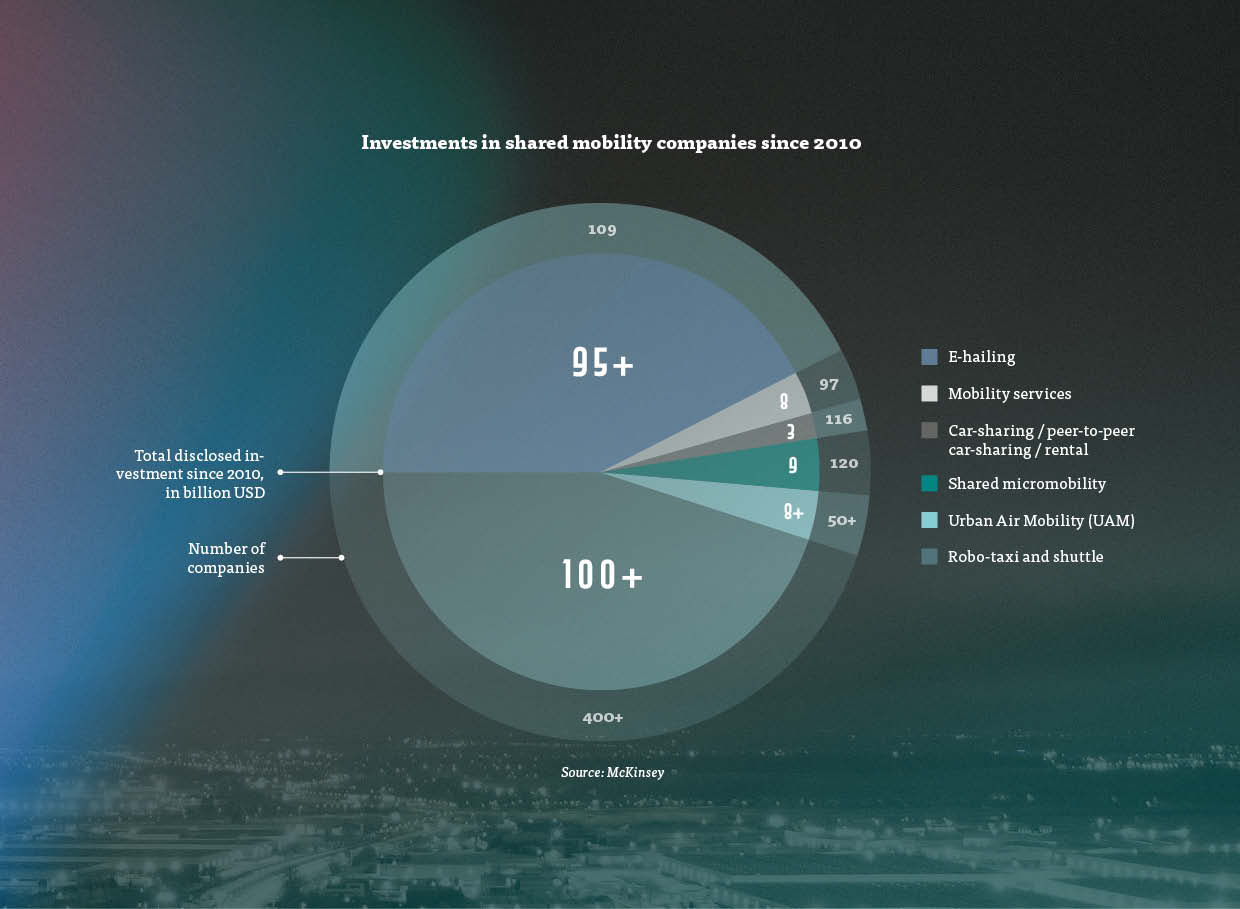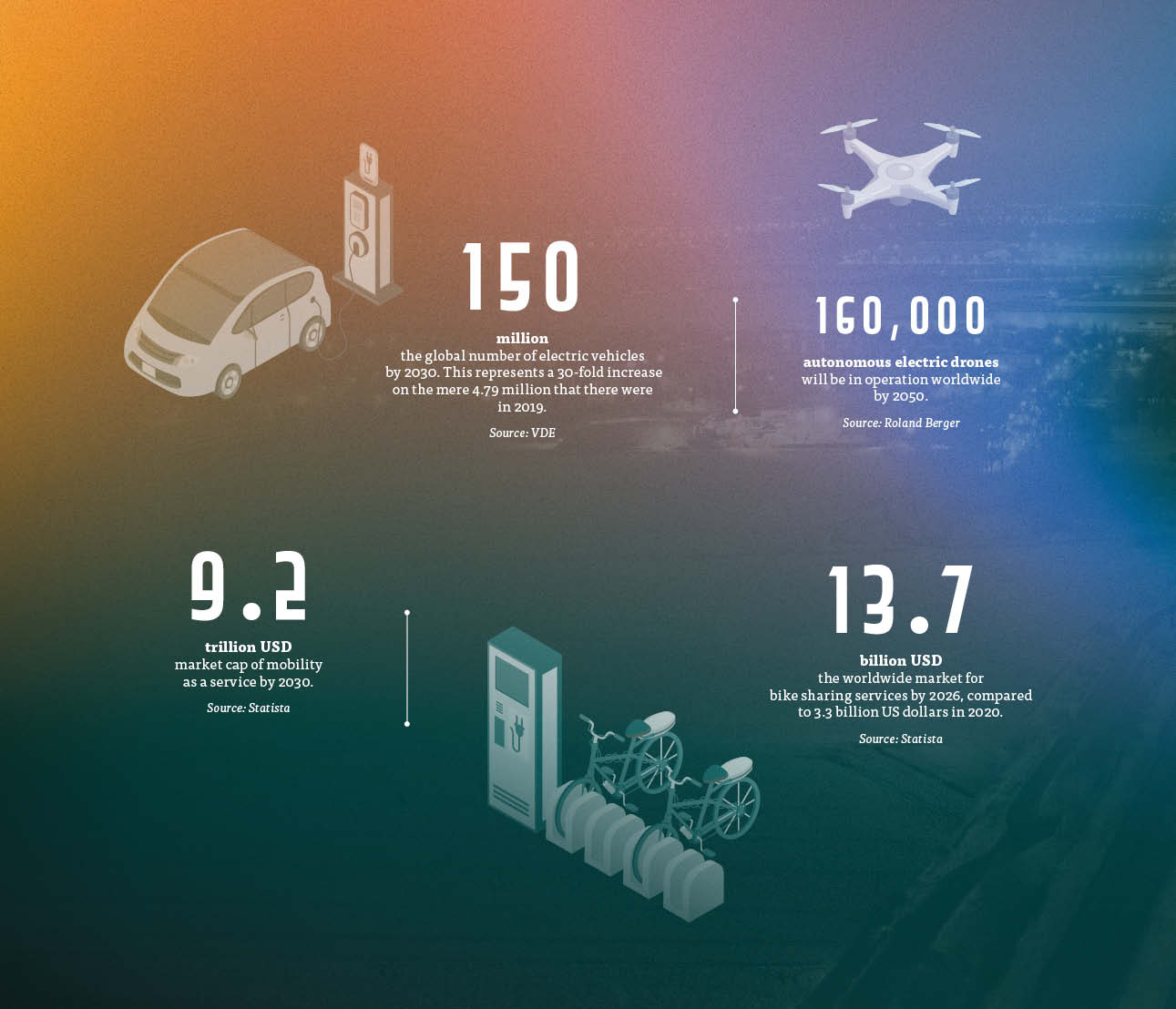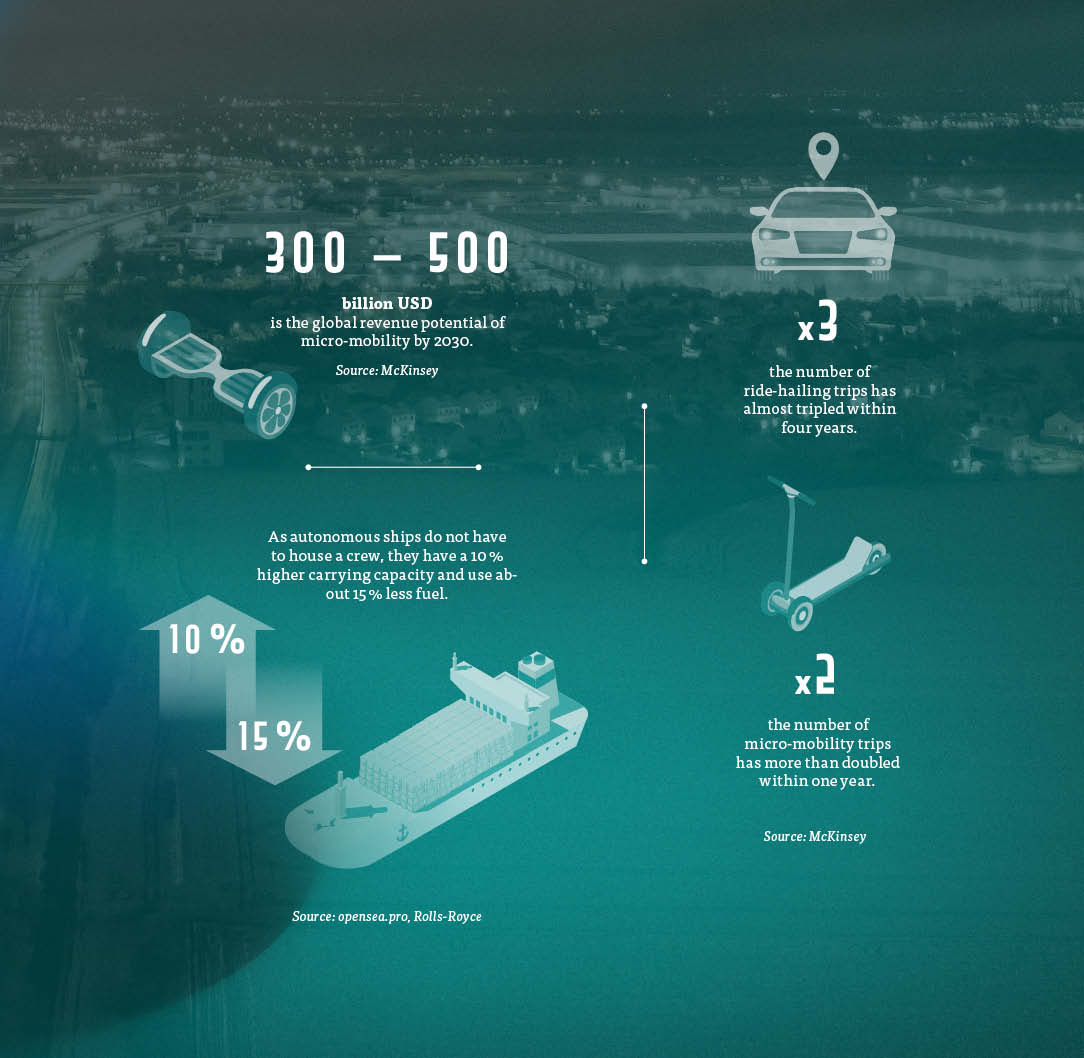The entire mobility sector is undergoing huge changes. Electrification, autonomous vehicles and the sharing economy are shaking up vehicle and user behaviour as well as entire business models.
Electric vehicle start-ups have come from nothing but have become some of the richest companies in the world. Drivers have been caught napping at the wheel in self-driving vehicles and flying electric taxis have begun to leave the pages of science fiction books. Almost no other sector is going through such radical upheaval as mobility.

Overarching transformation
Road, rail, air and water traffic are all affected by these disruptive changes. Digitalisation and decarbonisation are changing transport methods and infrastructure. The changes are affecting more than just individual vehicles; the connectivity of different modes of transport, both directly with one another as well as with traffic management systems and service providers, also offers immense potential for the future.
“Future-proof, sustainable mobility systems are being designed by combining automated driving and connected systems. Expertise in electrical engineering and computer science is key to the success of this transformation, now even more than in previous years,”
says Professor Florian Lang, Head of Intelligent Mobility Systems Studies at the University of Technology, Business and Design Konstanz (HTWG). The rapid pace of change has been aided in no small part by technological leaps in the base components and materials, from battery technology with ever higher power density to intelligent environmental sensor technology.

Emission-free future
Two big drivers of change in the mobility sector are climate change and the associated renunciation of fossil fuels. Today’s transport across all sectors is predominately reliant on fossil fuels. According to the International Energy Agency, 7.7 gigatonnes of CO2 were emitted by personal and freight transport in 2021 alone – which makes up 37 percent of CO2 emissions from all end use sectors. However, countries around the world have already started trying to change this: in the European Union, only emission-free cars will be approved from 2035. This will also be the case in California and Great Britain.
Even China, the biggest automotive market in the world, will only be approving environmentally friendly vehicles from 2035. This means that electric motors will become the predominant form of propulsion in the world of mobility. And not just for cars: in shipping, electric ferry deliveries have increased to around 80 megawatt hours per year, according to IDTechEx.
Furthermore, the costs for battery packs have fallen to less than 600 US dollars per kilowatt hour, energy density has increased and innovations in heat management have improved safety by a significant degree. Similar reason are also encouraging investment in electric air taxis, with American Airlines, UPS and Airline Saudia having already placed intial orders. The European manufacturer Volocopter wants to take its air taxi service to the Olympic Games in Paris in 2024. Electrification brings yet another advantage: urban transport will become quieter and cleaner – and increasingly healthier for those who live in urban centres.

Urbanisation is shaping mobility trends
Urbanisation is the second significant driver behind changes in mobility, with more than 60 percent of the global population expected to be living in cities by 2030. The urban mobility trends of the younger generations show a growing preference for cycling, walking, public transport and shared mobility services, rather than using your own car.
Experts expect that the sharing of electric, autonomous cars will be part of a larger, integrated, multimodal eco-system, in which the main focus will be the provision of highly individual, seamless and needs-based transport services. This also includes last-mile solutions such as drones or micro-mobility within cities.
Autonomous vehicles are changing habits
IDTechEx estimates that commercial autonomous cars or robo-taxis will be ready for the market as early as 2024. User transport habits will fundamentally change with the advent of autonomous vehicles: currently it is people – more specifically the driver – accounting for the highest costs in popular ride-hailing services such as Uber or Lyft. With robo-taxis, drivers will become redundant, which will allow mobility services to be significantly cheaper.
IDTechEx assumes that the market for this will grow by an average of 30 percent each year. For future generations, private car ownership will be a relic of the past. This will also mean enormous changes for car manufacturers: given that an autonomous car will be able to provide services for multiple people every day, the number of cars being sold will decline, even if the total number of kilometres driven worldwide increases. The manufacturers could compensate for this with new business models for innovative services. Digital eco-systems which integrate customers, distributors and partners are the main priority for almost all manufacturers.
In this way, mobility is much more than just a way to get around, at least futurologist and urban geographer Dr Stefan Carsten thinks so:
“It is, in fact, the driving force of social and economic existence, in both the physical and virtual realms. It determines which forms of transport we use to travel and what our journey looks like. It defines the concepts and drives of the future and is at the centre of the most important innovations of our time, innovations that we urgently need in order to successfully manage the social and economic impacts of coronavirus and climate change in a sustainable way.”


